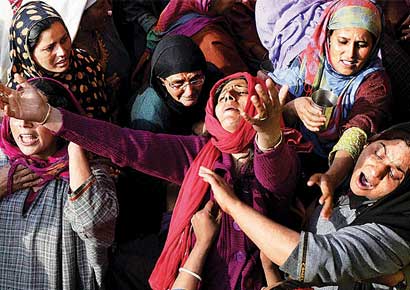The roots of the conflict between the Kashmiri insurgents and the Indian Government are tied to a dispute over local autonomy. Democratic development was limited in Kashmir until the late 1970s and by 1988 many of the democratic reforms provided by the Indian Government had been reversed and non-violent channels for expressing discontent were limited and caused a dramatic increase in support for insurgents advocating violent secession from India. In 1987, a disputed State election created a catalyst for the insurgency when it resulted in some of the state’s legislative assembly members forming armed insurgent groups.

More than 60,000 people, mostly innocent civilians, have died in the 15-year conflict. Half a million Indian troops are stationed in Kashmir, fighting Pakistani-funded militants who slip across the border to attack the troops but also to terrorize the local population into giving them shelter and assistance.
The children are terrified that their parents may join the 8,000 people who international human rights groups say have “disappeared” after being taken away by the security forces over the last 15 years.

There is a knock on the door.Militant violence has fallen to its lowest levels since that time, but the region is still seething with anti-Indian sentiment. Last summer more than 100 people were killed in large demonstrations for independence, mostly by police bullets.
“There are a number of reasons for the decline in militancy – international pressure on Pakistan, disenchantment, a fence between the two countries,” Mr Abdullah said. Development projects in Kashmir were also important, but he added: “We would be stupid if we thought that by building roads and hospitals and schools that we would no longer have a problem. You cannot buy or shoot your way to a solution. You have to talk.”
 World Insights Bringing You best of world at one place
World Insights Bringing You best of world at one place